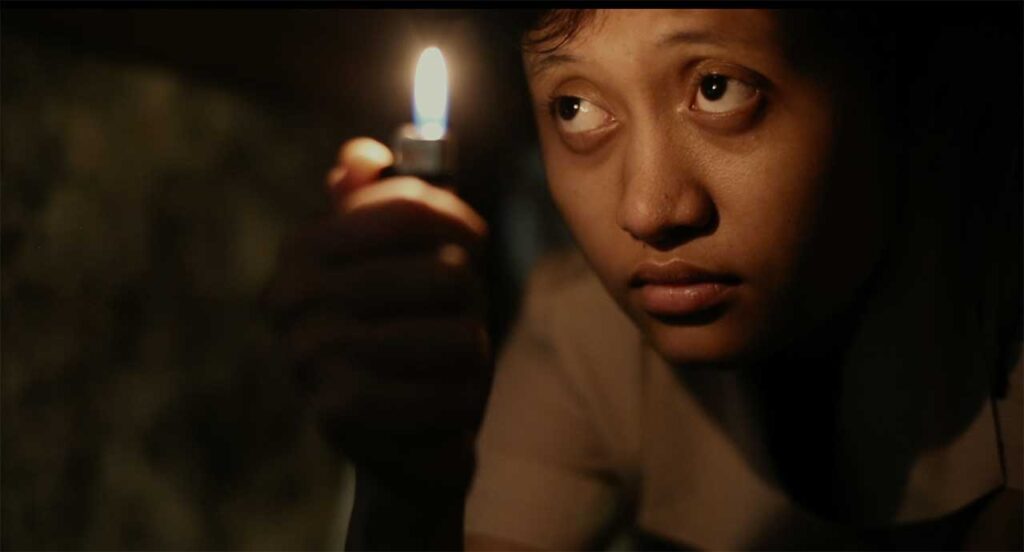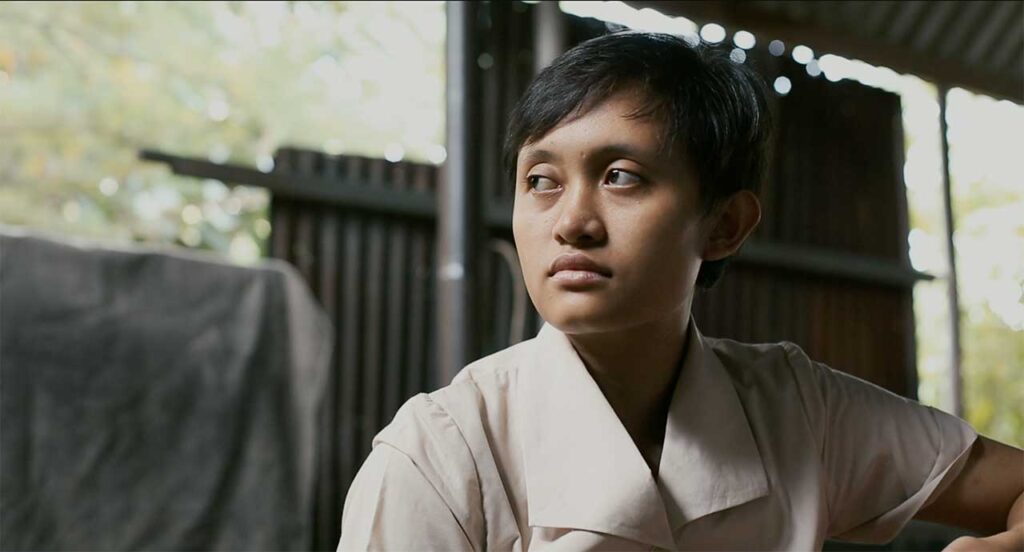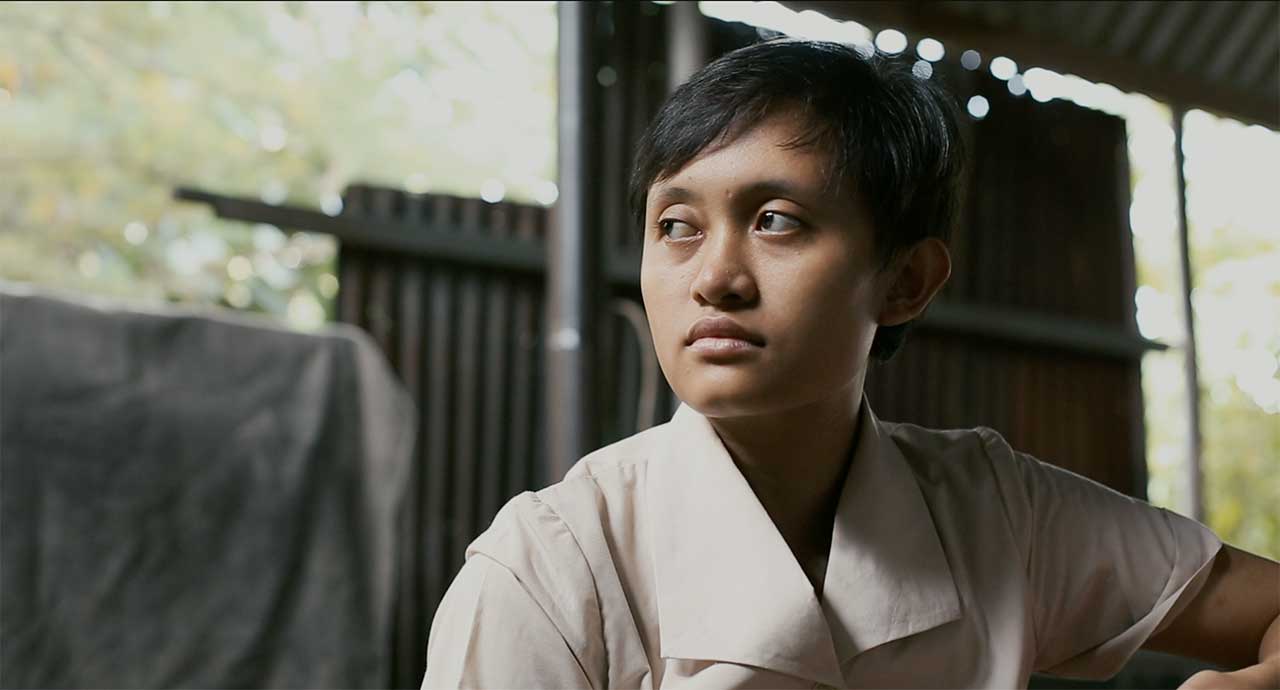Traces of Absence
This article contains spoilers.
More often than not, the family is a symbolic bastion of love and solace. Family members function as a pillar of support, assisting one another in overcoming trials and tribulations.
At least, that is the ideal situation for all. But what if a family member bails out on his own, abandoning his loved ones behind to fend for themselves? Wregas Bhanuteja’s In the Year of Monkey portrays this circumstance in a desolate tone where the family structure crumbles due to the absence of the father figure.
This film piqued my interest as it represented the reality of single mothers who have to deal with the difficulties that surface when the breadwinner of the family irresponsibly leaves. Perhaps in Indonesia’s patriarchal society, the male could desert his home, discard his familial ties and abandon his wife and child without facing much backlash from the community. The intertwining themes of kinship and libido resonate in this film as the absence of her husband led the protagonist, Diah to turn apprehensive of men but still desire for a masculine figure to seek emotional and physical support.
In my interview with Bhanuteja, I asked about his intention of the film. Through In the Year of Monkey, he wanted to showcase the power and strength of women in overcoming their dire situations. Diah is an exemplary figure of such tenacity that he wanted to depict. Relinquishing her dignity, she offers the exhibition of her genitals to her colleague, Jarwo, with a matchstick in exchange for money. The idea of such an exchange was inspired by the phenomenon of ‘Matchstick Women’ Yogyakarta during the 1980s. These women would sell hot drinks on one table and matchsticks on the other. Buyers of the matchstick could peep at the women’s genitals under the table.

However in In the Year of Monkey, Jarwo in return offers Diah to see his penis and proposes to pay her as well. I thought that his effort to involve Diah to be the one underneath the table was an attempt to nurture a bi-directional relationship within them. He yearned for her to be his kin.
The raw shots of both male and female genitalia left me in surprise me as I believed that Indonesia’s culture was still a conservative one. Gaining insight from director Bhanuteja, Indonesia was actually heavily influenced by the Hindhu Kingdom in the 4th century where statues of penises and vaginas that symbolised fertility and prosperity were erected (pardon the pun). Through his film, he sought to recover the culture of what is currently seen as taboo back in Indonesia. Also, he commented that only through the actual shots of genitalia, the experience of engaging with ‘Matchstick Women’ could be a truly vicarious one for the audience.
Furthermore, the appearance of the penis in the film is symbolic. It represents both love and hatred to Diah. After all, it was her prior sexual encounter with her ex-husband that had led her to the bleak situation that she is currently in. Yet, as she knelt in front of Jarwo’s penis, she eventually becomes captivated by Jarrow’s gradual erection. Her innate lust overcame her self-restraint on sexual desire. The film ends with a scene of Diah bathing her son, focusing on his penis. Her product of creation remains as a vestige of her departed husband, the loss of kinship and the sexual symbol of men that she probably yearns but is afraid to attain again.
In essence, the concept of kinship plays a significant role in the maintenance of solidarity in the family. Much like the Durkheimian idea of Collective Consciousness, kinship fosters a notion of shared beliefs and support which unifies family members. Thus, with the fragmentation of such bonds, the family structure disintegrates, entailing a life of hardship for the ones who are left behind.
Since I had the honour to interview the director, Wregas Bhanuteja through an email, here are some of his answers to shed some light onto the creation and meaning of this film.
What is the meaning of the title (In the Year of Monkey/Prenjak) and how is it linked to the film itself?
The title itself has a very personal meaning for me. Prenjak is the name of a bird species in Java. The women who sold those matches in 1980’s, were usually called as Ciblek by the people. Ciblek is a short term of Cilik-cilik Betah Melek. That is a Javanese term for “You like to open your eyes in a very little light”. In another interpretation, Ciblek also means a small bird species in Java.
I wouldn’t like it if this film title was to be called Ciblek. I think it will be too obvious. So I thought of another bird species that is similar to the Ciblek bird which is the Prenjak bird. The Prenjak bird is a small bird which can sing very well. But it cannot sing if he’s alone. Prenjak only can sing if there’s a pair in a cage. So I thought that the Prenjak can be a metaphor for a man and a woman in this story. Diah (the woman) needs a man to live with her so they can work together to build a family.
In The Year of Monkey is the international title of this film. I have no correlation between Prenjak and In The Year of Monkey. The only decision to put this title is that all the crews and the actors in this film were born in 1992. 1992 was also the Chinese year for Monkey hence we all have a monkey zodiac. When we made this film, the year was 2016 too which was the year of the monkey. So I hope that this year will be our year of making films and prosperity.

The gloom on Diah’s face was seen throughout the film and I could really feel her despondence. Why did you decide for Diah to be portrayed as such a sad character?
The inspiration of Diah’s character was based on my friend’s life. I had a friend who got pregnant during our 2nd year of high school. Her boyfriend ran away and didn’t want to take a responsibility. So she gave a birth to her child and had to take care of her child alone. She was really sad because while we were all still playing and travelling during our years in high school, she had to quit school and work so as to take care of her child. Diah’s character was based her life, a single mother who had to work and take care of her child alone, while trying to earn money to pay her rent.
The film ended with Diah bathing her son and a shot of his private parts. Why did you decide the end the film this way?
The penis in this film symbolises the male figure. Diah became pregnant and gave birth to a child because she had sex, and eventually her husband leaves the family. So the penis became the source of happiness and also sorrow. Her son’s penis became the only thing that Diah should take care of as she could not see her husband’s penis and have sex with him anymore. The only penis (man) that Diah has is only her son. So I wanted to tell the audience, if you have a decision to love someone and have sex with her, you should take care of her and be responsible. You cannot leave her alone.
When did you realise that you wanted to create films as a career?
I used to be a child who didn’t have a talent in anything. I couldn’t play a music, I couldn’t play a basketball, and I was not smart in school like my other friends. I started to be involved in short films in my 3rd year of Junior high School when I was 15.
My first experience in short films was for a film competition in my school to celebrate the independence day of Indonesia. The competition was between the class in my school. I became an actor in the film of my class. But, I often interrupted and protested against my director over his directing style.
From that, I realized that working on a film set as a crew member was a lot of fun. During high school, I took a film as an extra subject and started to make some short films. And I started to believe that film is my way of life. I decided to go to a film school after the high school. But my parents didn’t allow me. I made some short films to make my parents trust my choice. Finally, my 10th short film during high school, won a national competition in Indonesia. With that, my parents allowed me to go to the film school in Jakarta Institute of Arts. I studied film in Jakarta Institute of Arts and made more short films, until I graduated from the Institute in 2014.
Catch Wregas Bhanuteja’s In The Year of The Monkey in Programme 2 of the Southeast Asian Short Film Competition on 2nd December (Friday), 9:30pm, at the National Gallery Auditorium.




